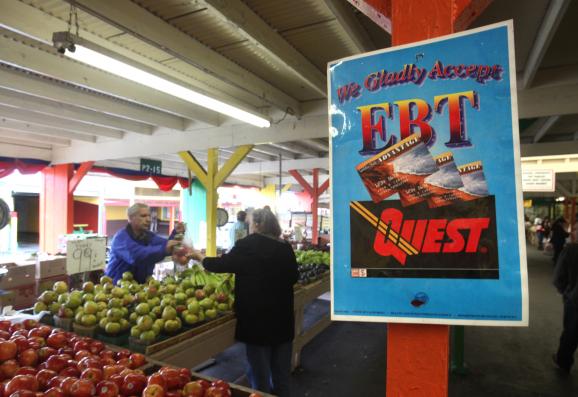
In this photo taken Saturday, Feb. 6, 2010, a sign announcing the acceptance of electronic Benefit Transfer cards is seen at a farmers market in Roseville, Calif.
Credit Rich Pedroncelli / AP Photo
By Tom Banse, KPLU
Washington state policymakers are pondering whether to make an end run around looming cutbacks in the federally-funded food stamp program.
This would mimic what Oregon and three eastern states just decided to do.
In 15 states and the District of Columbia, low-income households get extra food stamps if they’re also getting help paying their heating bills. Washington, Oregon and California are among the states running things this way. Idaho does not offer the added benefit.
This winter, Congress tried to trim the ballooning costs of the food stamp program by setting a higher threshold for what’s come to be called “Heat and Eat.” The provision would decrease food stamp benefits for about 100,000 households in Oregon and twice that many in more populous Washington.
Now, Oregon’s governor has approved a restructure to low-income heating assistance to negate the federal policy change. And Washington Gov. Jay Inslee says his state is discussing the same.
“We’re going to look at anything we can do, but that’s not going to get done today,” he said.
The trim back of food stamp benefits doesn’t take effect until the fall here. A recent editorial in the Wall Street Journal gave voice to fiscal conservatives by rebranding the Heat and Eat benefit, “Cheat and Eat.”
Congressional negotiators booked $8.6 billion in savings from tightened eligibility for food stamp benefits over the next decade. Because of the state workarounds, those savings are now in doubt.
In Oregon, the avoided decrease to food stamp benefits averages around $58 per month per household. In Washington and California, the average cutback per household is a little bit higher.
